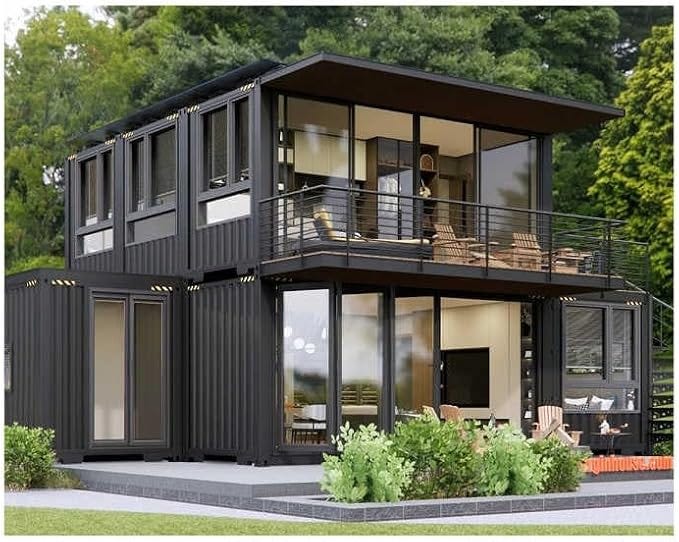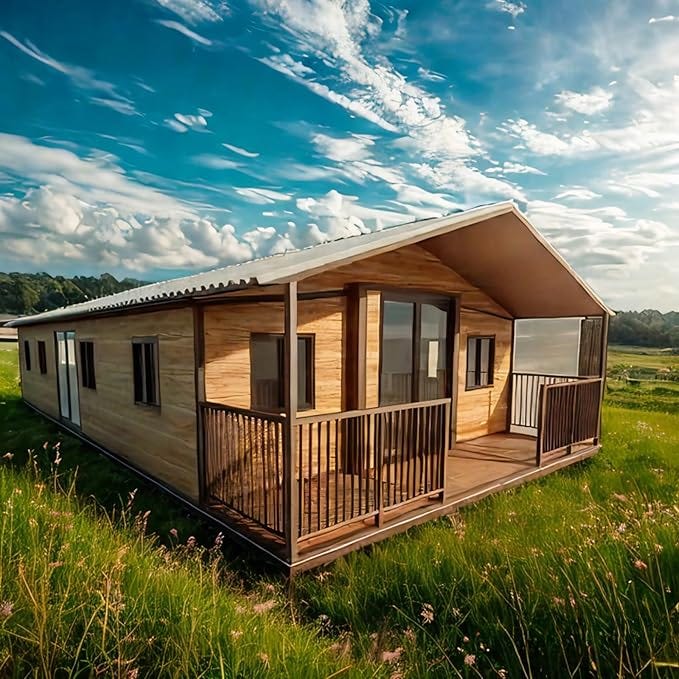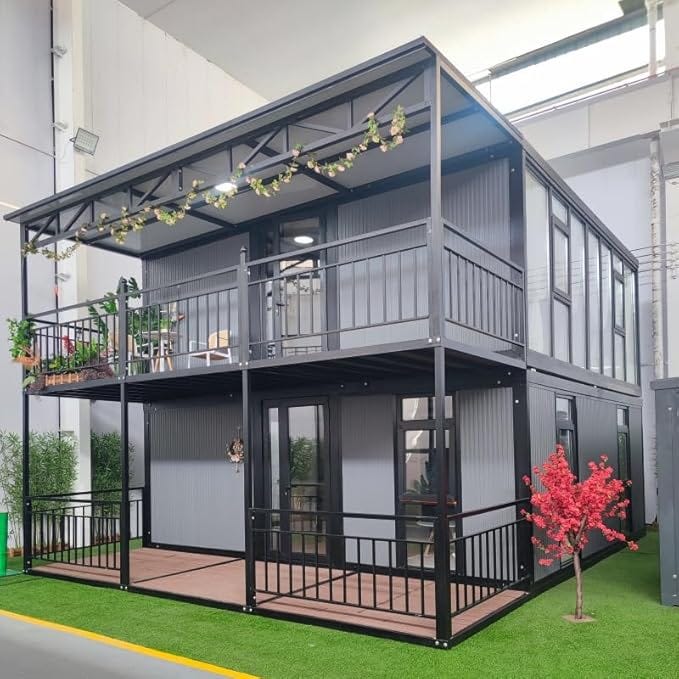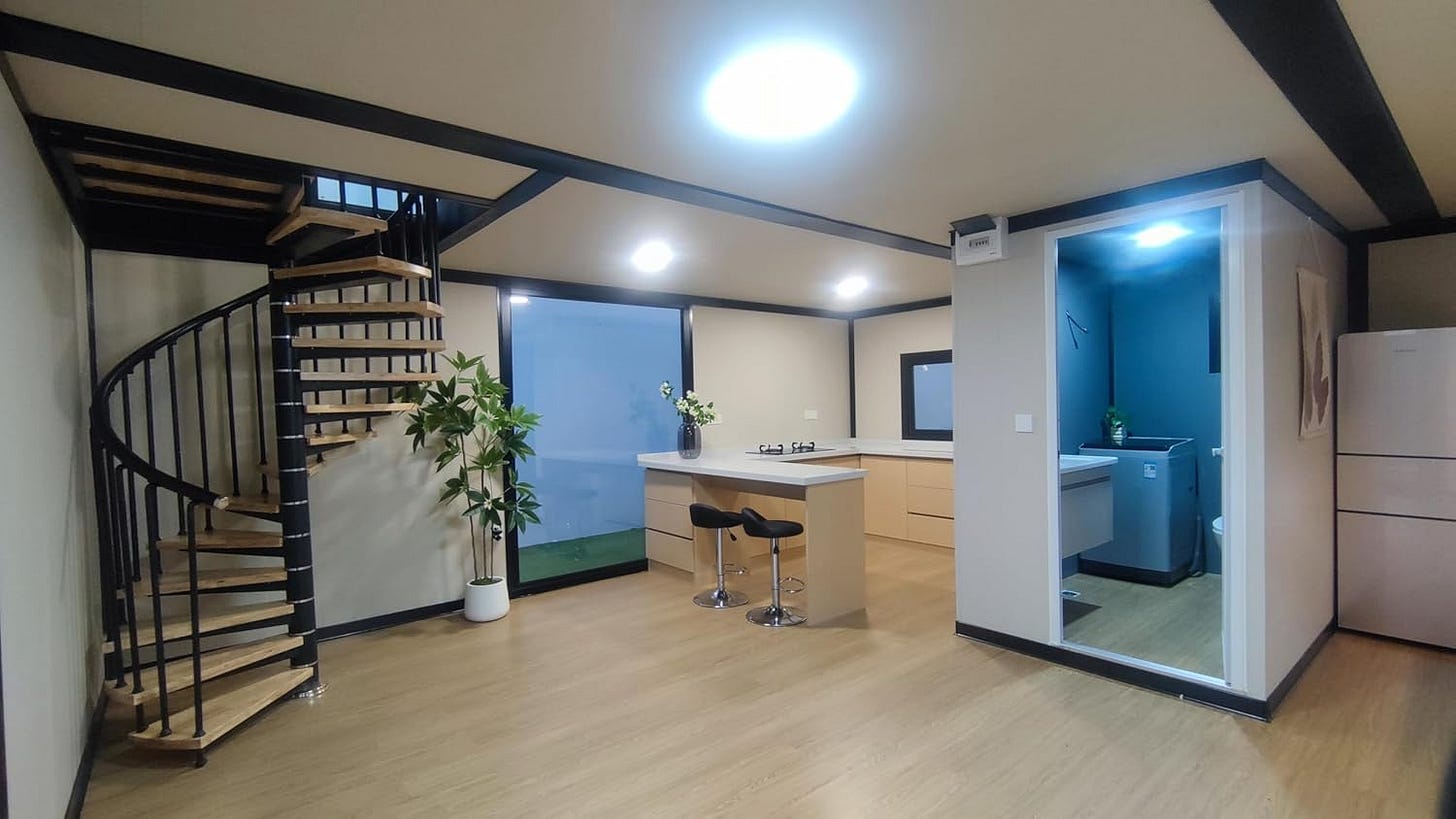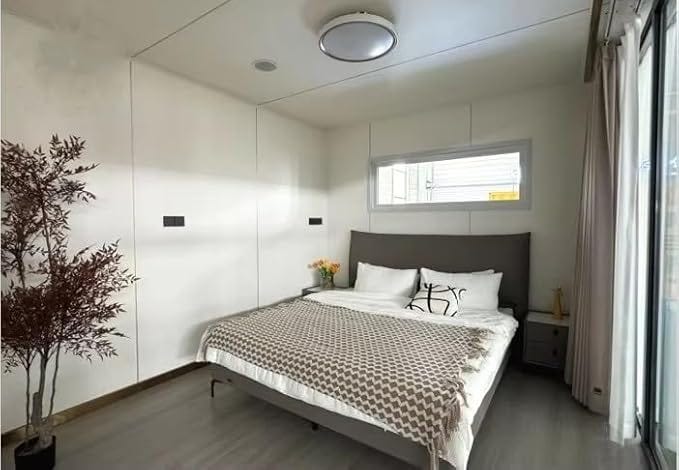Modular Living, Amazon-Style
Affordable, modern homes delivered to your doorstep in weeks. But Amazon’s modular housing experiment reveals deeper problems with affordability and access.
A new and surprisingly practical housing supplier has entered the market, promising the convenience of shopping for your new abode from the comfort of your living room and having your new dwelling delivered to you (or wherever you prefer).
Of course, it's Amazon.
While browsing Amazon for office supplies and the latest armload of books, I discovered listings for actual homes. And not just any homes. These are sleek and affordable multi-room structures with all of the modern conveniences. Best of all, they often have price tags under $50,000, less than what many people spend on a luxury car.
Just check out this beauty.
A two-bedroom, two-story contemporary style home that features a living room, full bath, kitchen, an office, and library space, lots of windows for natural light, and plenty of outdoor deck space. And it's just $40,000 with free delivery. And, if you don't like it, Amazon has a 30-day return policy (like it does on most items in its marketplace). Try returning to a traditional house after a month.
Prefer something a little more rustic? This wooden, frontier-style home is available and customizable for two to five bedrooms, a full bathroom, and a living room. The base price is an unbeatable $11,000—roughly what you'd pay for a decent used car.
Or perhaps you prefer something that combines old Southern charm with a modern flair. This two-story modular home features antebellum elements with sleek modern appointments—a two-bedroom, two-story house with two full bathrooms and ample living space.
What happens when they arrive at your doorstep? According to the manufacturer's descriptions, they initially resemble a cargo container. Then, with a little elbow grease, they unfold like a Transformer to become a livable, functioning home. In minutes, you can be in your new, modern house. This one is just $20,000, if you can believe it.
While the exteriors of these modular homes have a modern, stylish appeal, their interiors need a creative touch. The walls have an almost plastic-like quality that will require thoughtful placement of furniture, wall art, and plants to make them look alive and less sterile. Remove the furniture from the promotional photos, and these manufactured homes have all the warmth of a Walmart restroom.
But here's what Amazon conveniently leaves out of their descriptions—and it's the most important part. The package doesn't include setup, tie-in to municipal water and sewer systems, connection to the electrical grid, or—and this is the big one—the land on which to place it.
While Amazon claims it can deliver one of these units in two weeks, it assumes that the buyer already has a lot of foundational structures in place. There's no consideration for local zoning ordinances or building code requirements that may prevent buyers from realizing their dream of a quick and affordable home. They do advise consulting with a professional before setting up the house, which is like suggesting you might want to check if you can drive before buying a Ferrari.
The reality is that building codes vary dramatically across municipalities. Some areas welcome modular construction, while others require extensive permits, inspections, and modifications that can double or triple your initial investment. You might buy a $20,000 house only to discover that you need an additional $30,000 for site preparation, permits, and code compliance.
Modular and manufactured homes are nothing new, but there's a certain amount of flair to these homes that distinguishes them from the mobile homes that dot trailer parks around the world, with their narrow profiles, faux wooden paneling, and hidden wheels that are never used once placed on a lot.
What's genuinely interesting is that these homes offer more space and customizable options than the traditional trailer park mobile homes. They're stackable, expandable, and have far more amenities. And they're relatively affordable when you consider the alternatives. The cost of building an average home today ranges from $100 to $500 per square foot. The cost of land drives the price up even more. In some parts of the U.S., a postage stamp lot (5,000 square feet) can cost between $500,000 and $1 million.
The world faces a housing crisis that persists despite efforts to address it. Worldwide, the World Economic Forum estimates 150 million people are homeless and another 1.6 billion lack shelter that is safe, sanitary, and secure. That's 21 percent of the global population—equivalent to the combined populations of the United States and China.
Housing, particularly in developed countries, is a thorny issue rooted in economics and psychology. People like living in organized and maintained communities. Homes aren't just places to live; they're investments and status symbols. When speaking with people in their 40s and 50s, they often consider their homes to be the cornerstone of their net worth and retirement planning. They, and their community leaders, will fight fiercely to protect those investments and maintain their wealth.
This protection mentality makes building expensive and exclusive. Land—the one commodity they're not making more of—is the first piece of the cost equation. Location drives everything. Want a place on the beach? More money. Want an apartment with soaring views of the Manhattan skyline? Much more money. Want enough land so you don't see your neighbors, but still be able to commute to downtown Los Angeles? Much, much more money.
Low-income and affordable housing remains scarce because of these economic realities. Communities often block the development of multi-family units because they don't want an influx of residents they believe will stress local infrastructure and devalue their properties. Meanwhile, housing developers favor larger, more expensive dwellings because they generate higher profit margins per unit than smaller, less expensive alternatives.
The irony is that Amazon's modular homes, despite their limitations, actually address several key housing challenges. They're affordable, quickly deployable, and environmentally more sustainable than traditional construction. But they bump up against the same systemic issues that plague all housing solutions: land availability, zoning restrictions, and NIMBY attitudes.
Every country needs to rethink community planning and housing policies to address the growing number of homeless or poorly housed people worldwide. Amazon's modular homes may not be the complete answer, but they represent an intriguing alternative to the particleboard palaces and McMansions sprawling across the landscape. The real question isn't whether you can buy a house on Amazon—it's whether society will create the conditions for innovative housing solutions to work.
Perhaps the most telling aspect of Amazon's housing venture isn't the homes themselves, but what it reveals about our housing market. When a company known for delivering everything from toothbrushes to trampolines starts selling houses, it signals just how broken our traditional housing system has become. The fact that a $20,000 modular home seems revolutionary rather than ridiculous tells you everything you need to know about housing affordability in 2025.



